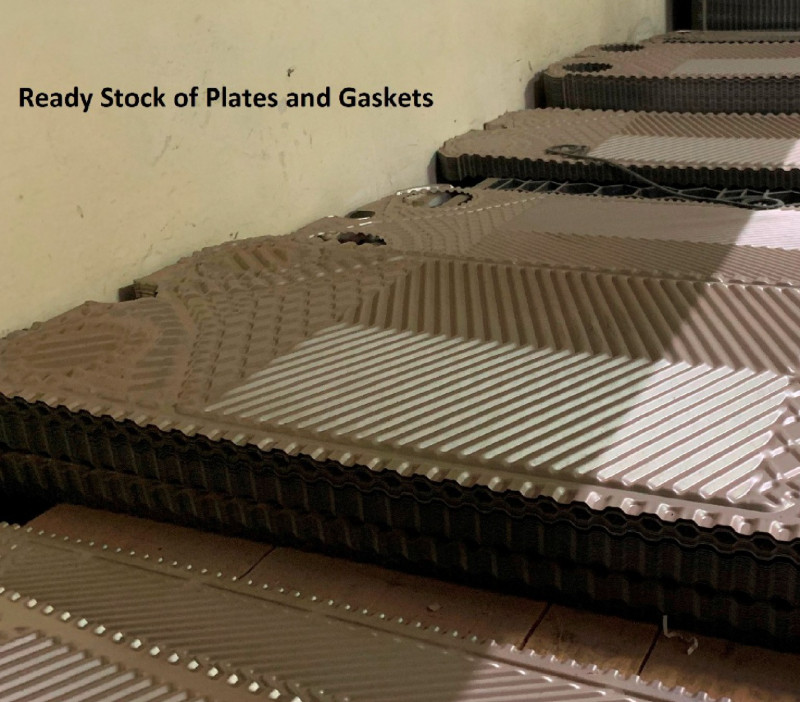Just installed a heat exchanger but not sure how to maintain it properly? Worry not! After reading this, you will have a fair idea about how to service your heat exchanger.Heat exchangers, just like any other appliance, need to be maintained and serviced on a regular basis to prevent long-term damage. Why? Not only does regular maintenance ensure operational efficiency, but also reduces downtime and improves the life of the equipment.
How often should the hardware be serviced?
One of the major queries our customers have is about the frequency of the heat exchanger servicing. It isn’t required on a daily basis, but it requires a routine type approach with the frequency of maintenance depending on usage and type of fluids flowing through the system. The standard frequency for carrying out the maintenance of heat exchangers is once every 4 – 6 years. If your heat exchanger requires more frequent service sessions to function, then it’s important to take a better look at it as it might be faulty.
What should you use to clean your equipment?
Once you figure out how often the cleaning should take place, it is important to take into account the size, location and type of exchanger in question before carrying out any maintenance tasks as not only do different exchangers operate differently, but they also need different conditions to be cleaned. For instance, in the case of cleaning a plate heat exchanger, it is advised never to use liquids which contain strong inorganic acids such as sulfuric acids, nitric acid, or in general any chemical containing ammonia when cleaning as they can corrode the steel plates in the exchanger.
If you have a lot of debris within the plates, then you can consider using chemicals to clean. When it comes to using cheaper chemicals, a mixture of lime or lemon juice and a little water can perform wonders. Nitric acids, citric acids, and phosphoric acids though are the most popular to clean the stainless steel plates. However, good old hard work with pressurized water to loosen debris and a bristle brush to scrub out the residues are still the best means of cleaning. Click here to buy chemicals to clean your plates
How can you carry out the cleaning process?
Heat exchanger servicing can be carried out through proactive or reactive means, proactive meaning carrying out routine checkups and cleanings. Reactive, on the other hand, means carrying out an overall check of the equipment. Proactive cleaning is the first stage of maintenance of any equipment with heat exchangers being no exemption. Carrying this process out not only prolongs the life expectancy of the equipment but also allows you to take note of possible faults and correct them as soon as possible to prevent further damage to the equipment. You can monitor the equipment’s pressure and temperature gauges which in turn give you an insight into any unexpected temperature and pressure changes. This aids in analyzing the performance of the heat exchanger in the long run which would assist in scheduling maintenance breaks. These breaks can be used to carry out cleaning, and inspections of the equipment. The best means of cleaning heat exchanger plates is the passing of ultra-high-pressure water through the unit. This means is most preferred over other means, such as the use of acidic solutions and drills, as they can damage the equipment if not done correctly and in some cases render the unit inoperative. Reactive means of cleaning is often done through Clean In Place (CIP) / onsite maintenance or in some cases at heat exchanger cleaning facilities/ offsite maintenance.
Off-site maintenance is better preferred and renders the best results as the unit is completely stripped apart with all possible faults taken note of. This method guarantees longer working efficiency as opposed to the onsite maintenance as gaskets, plates, nozzles, frames, tubings and other parts depending on the heat exchanger in question, are carefully examined and replacements are made, if necessary. Another reason offsite means is favorable because it guarantees longer functioning periods without the heat exchanger requiring any maintenance whatsoever which is highly beneficial to high production companies who are in operation all around the clock. Depending on the situation and the size of the Plate heat exchanger (PHE) we choose whether on-site or off-site cleaning is required. In case of small PHE such as our V10, V15, V20, or V40 models, we require customers to send the unit over to us for cleaning and on completion, we transport it back to the rightful owner. In case of very large PHE units such as our V60, or the V80, we understand that transport can be a costly or tedious for clients. We understand this and also provide onsite cleaning and maintenance to curb this issues. Not sure whether it is time for your heat exchanger to be serviced? Call us now for a FREE consultation!

